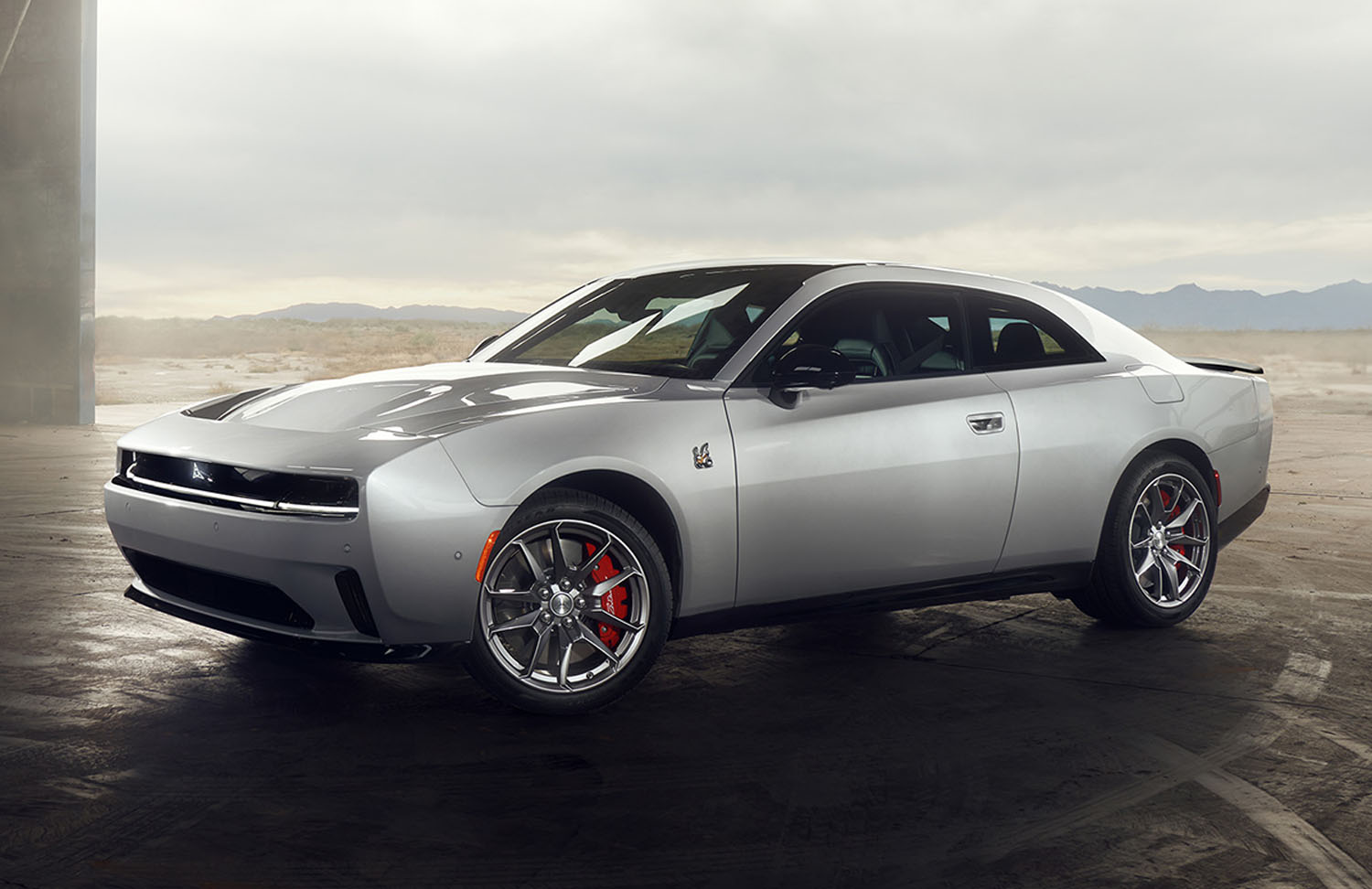The Charger sedan and Challenger coupe exuded testosterone, courtesy of snarling V-8s. Dodge says the EVs that replace them will be just as noisy.
The 2024 Dodge Charger Daytona is a Detroit anomaly: it’s a passenger car in an age of trucks and SUVs, it’s battery-electric when U.S. makers seem to be in an EV lull … and it resolutely, defiantly sneers at social convention and environmental concerns. “When everyone else is going left,” said Dodge CEO Tim Kuniskis, “we [Dodge] wanna go right.” OK then.
In that light, it’s the logical follow-up to the previous Charger, which ran for an astounding 18 model years over two generations. Courtesy of increasingly, absurdly powerful V-8 engines, the old Charger oozed testosterone, and affordable testosterone at that. The 707-horsepower Hellcat launched at $62,000, lower than any other car of equivalent power. And it signaled its presence with loud, antisocial noise, as if marking its territory.
The world’s “only” electric muscle car?
So how do you hang onto the very profitable “Brotherhood of Muscle,” as Dodge calls it, when EVs don’t roar, don’t vibrate, and awe their passengers with shocking instant acceleration that’s all but silent, rather than ear-splitting engine noise and smoky burnouts? Well, apparently you duplicate those latter qualities with cleverly engineered technical fakery—to make a high-performance EV sedan “feel right” to the American muscle bros.
The Charger will also have a version with a gasoline engine (the electric one is the “Daytona”)—but every version of the EV will outperform its gasoline counterpart.
It’s indicative of how far and how fast EV powertrains have come that the Charger will also have a version with a gasoline engine (the electric one is the “Daytona”)—but every version of the EV will outperform its gasoline counterpart. Like the latest BMW sedans that offer either battery-electric or gasoline power in the same model, e.g. the 2024 BMW i7 and 2025 BMW i5, the electric version is likely to be a better vehicle all around.
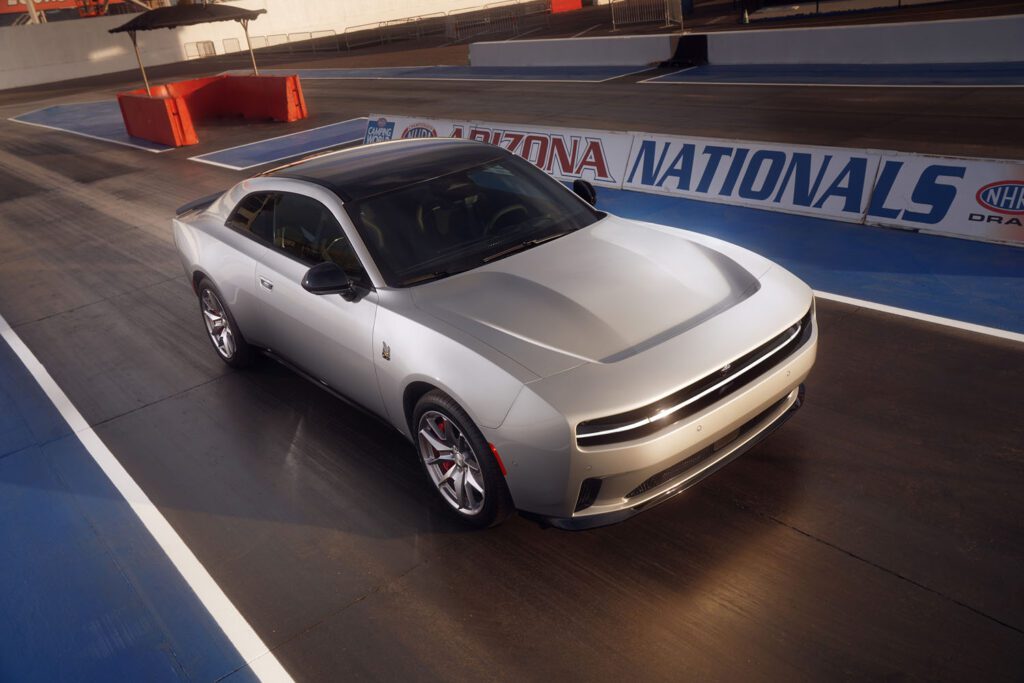

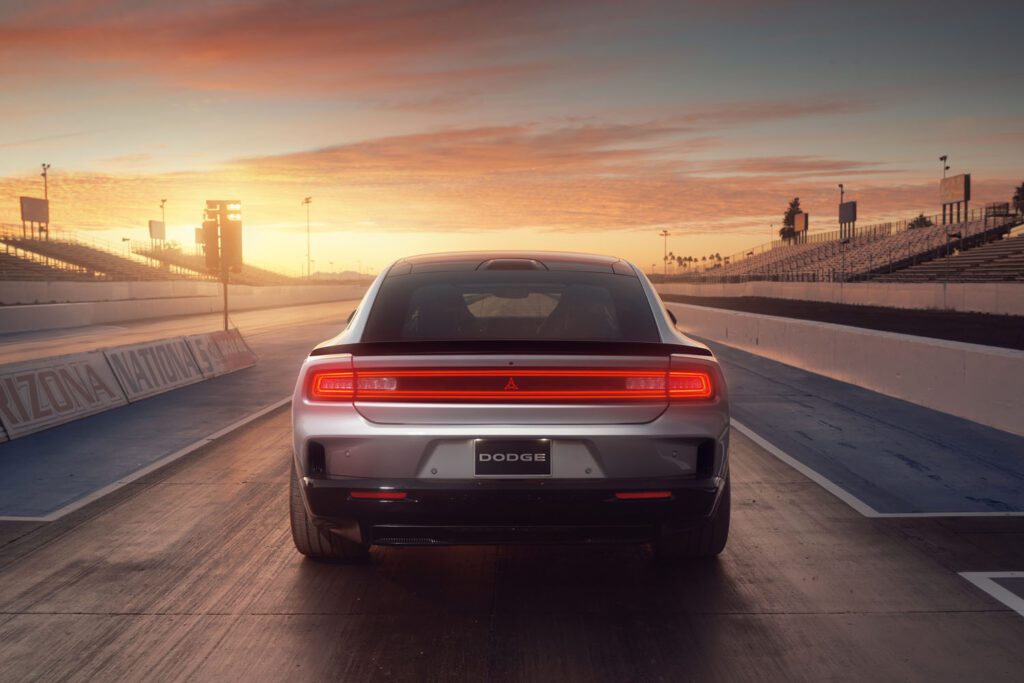
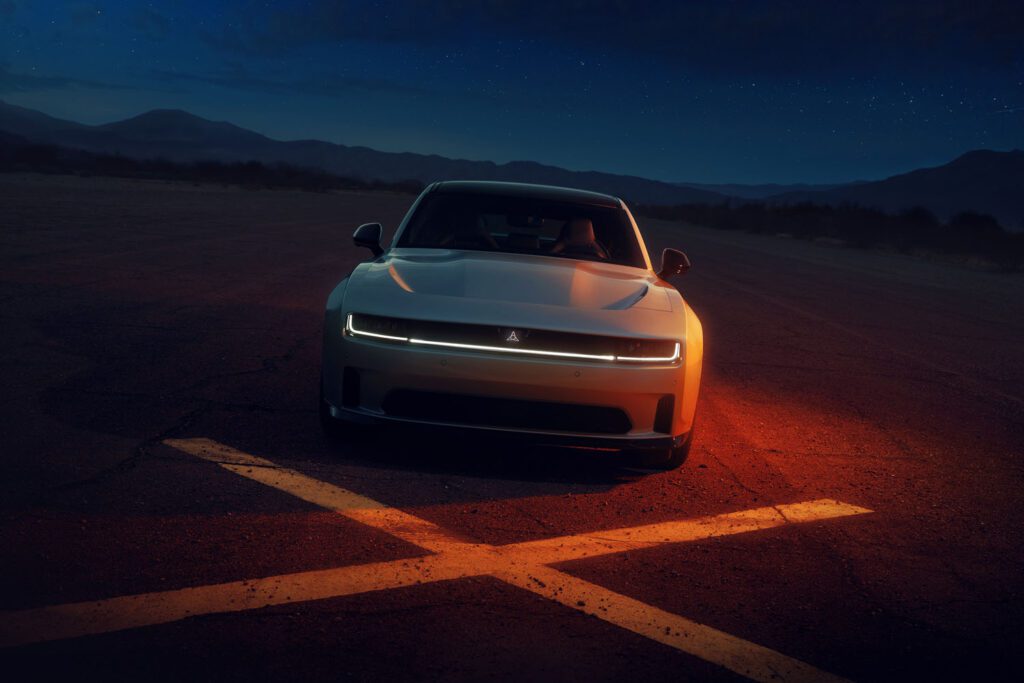
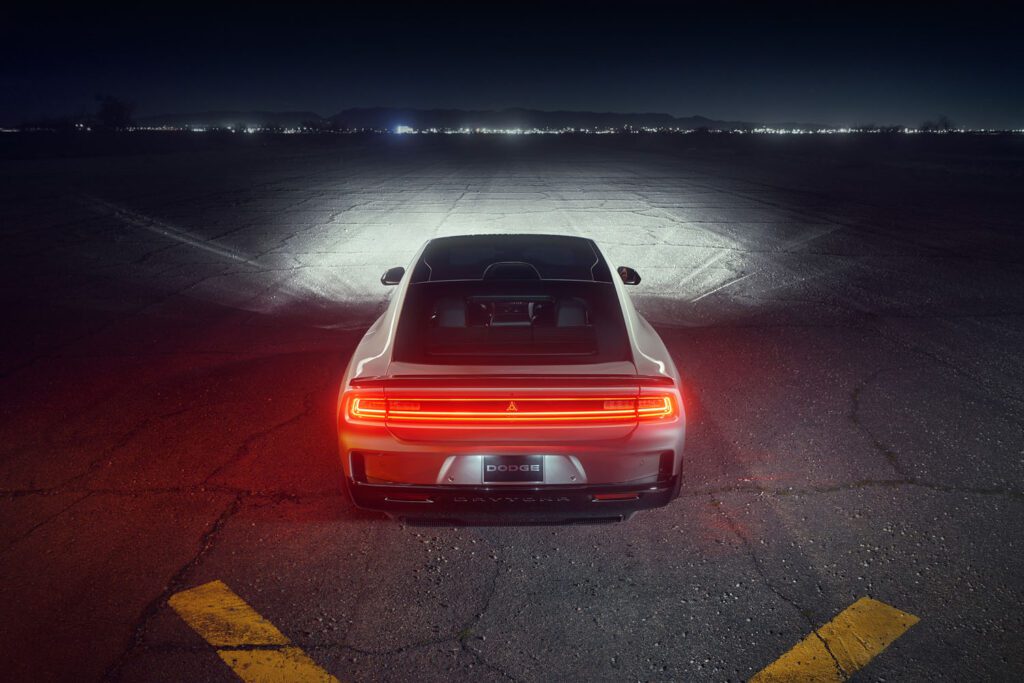
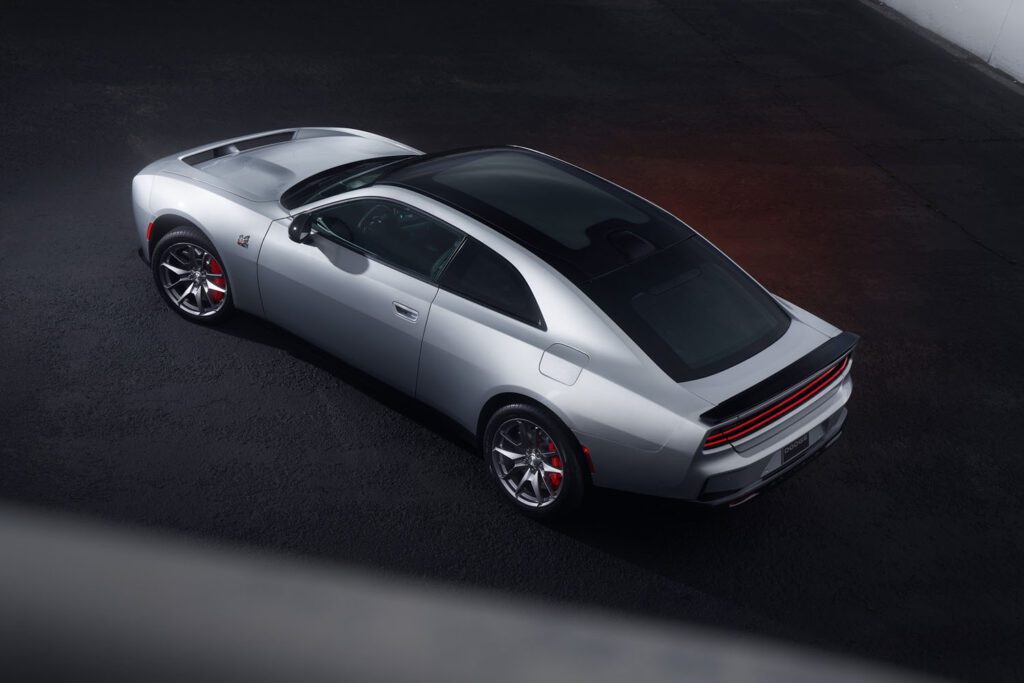
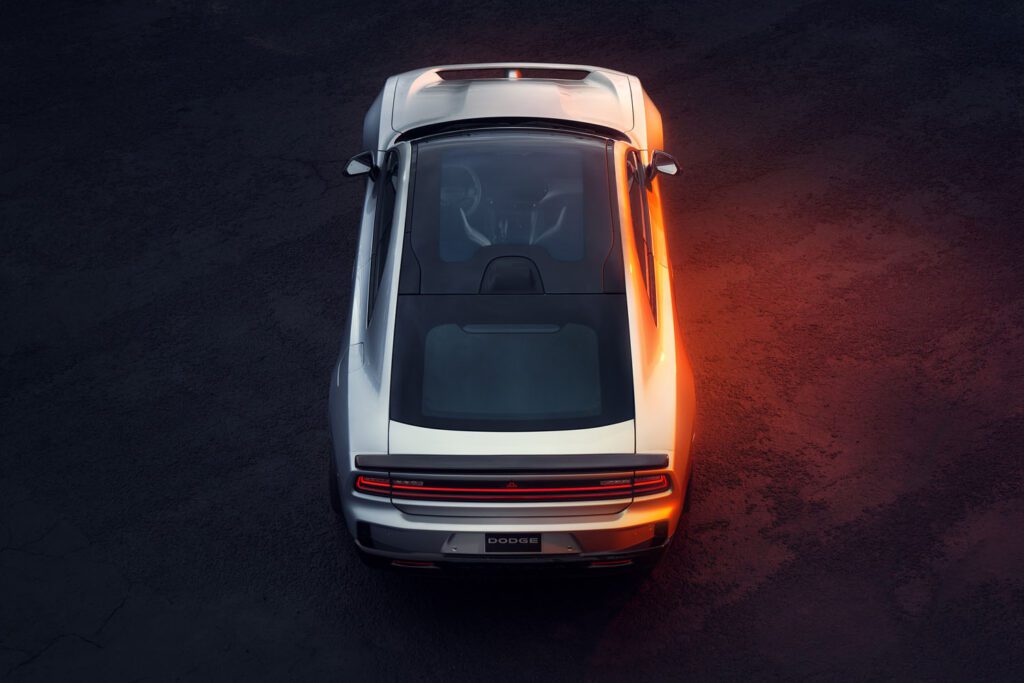
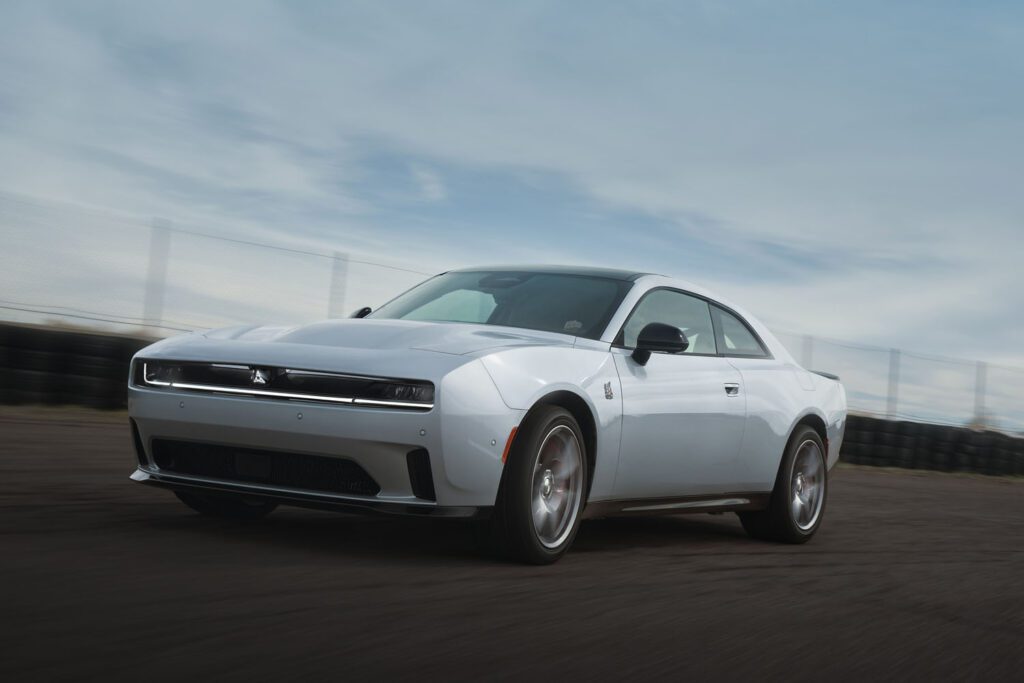
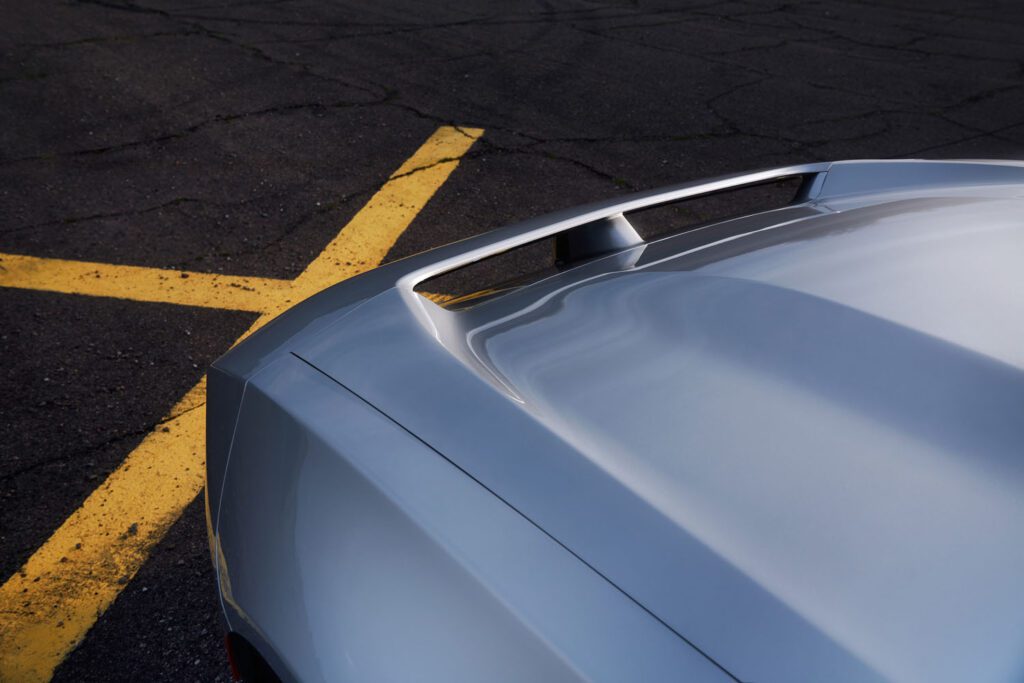
If all goes according to plan, buyers who want ultimate speed (and all that noise) will opt for the electric Charger, especially if they live in more progressive, EV-friendly coastal areas and can charge at home. Chargers powered by an inline 6-cylinder engine and automatic transmission, while still high-performance muscle cars, may appeal more to buyers in central states, those who can’t charge at home, or those worried about the availability of public fast charging.
The new Charger, electric and gasoline, is built on Stellantis’ STLA Large platform, which it shares with the upcoming Jeep Wagoneer S and Recon, along with future models from Alfa Romeo, Chrysler, and Maserati. Dodge bills the Charger as “the world’s first and only electric muscle car.” (Owners of Tesla Plaid and Lucid Air Sapphire models may quibble, but, hey, neither of those cars generates enough noise to be heard before it’s seen.)
The new Charger, electric and gasoline, is built on Stellantis’ STLA Large platform shared with other models from Jeep, Alfa Romeo, Chrysler, and Maserati.

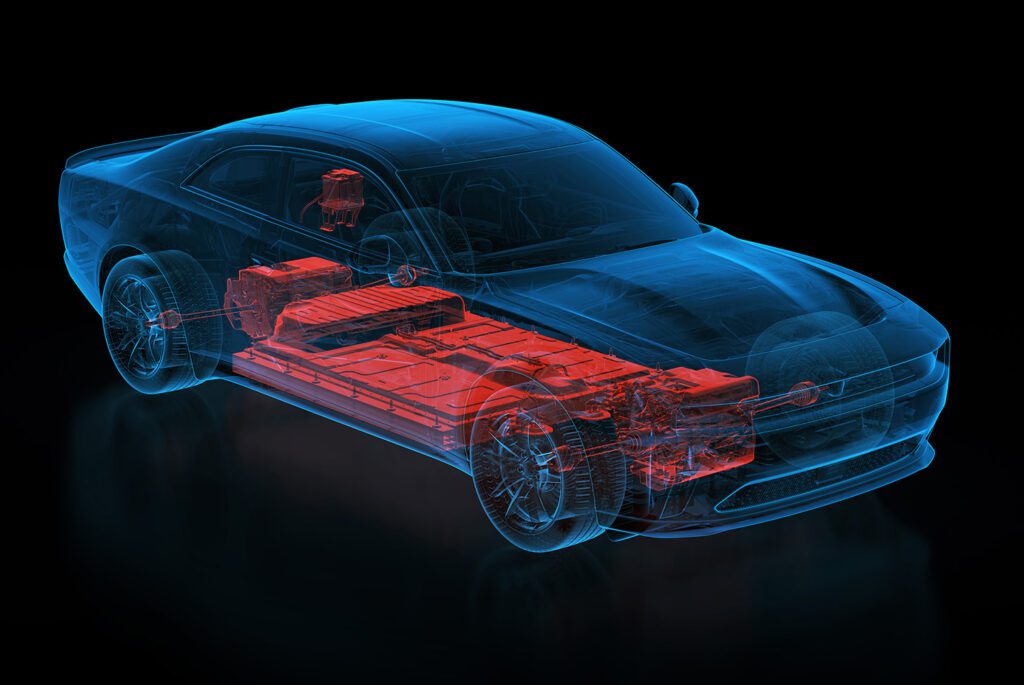
All Daytonas are powered by a 100.5-kilowatt-hour battery pack with 13 modules containing Samsung nickel-cobalt-aluminium cells, operating at 400 volts and delivering a peak discharge rate of 550 kilowatts. For its first year, two Charger Daytona versions will go on sale: R/T and Scat Pack. Standard power ratings for those models are 340 and 440 kilowatts respectively. Old Mopar muscle-car fans will understand the historic allusion, though they’ll likely want the horsepower equivalents: 455 and 590 hp respectively.
Power matters, but range? No one cares!
For 2024, both will come standard with a Direct Connection Stage kit already fitted, to allow maximum acceleration from launch. The R/T with the Stage 1 kit is quoted at 496 horsepower, while the more powerful Scat Pack with a Stage 2 kit produces up to 670 hp and 627 lb-ft of torque. The Brotherhood will appreciate its 0-to-60-mph acceleration time: just 3.3 seconds.
That’s not Lucid Sapphire territory, but we expect the Dodge to come in at a far lower price than the quarter-million-dollar Sapphire. (Dodge won’t release prices until much closer to this summer’s delivery date.) Every Daytona model comes with all-wheel drive as standard, along with a “Power Shot” feature that delivers an extra 40 horsepower for 15 seconds (a similar concept is called “Boost” on the Kia EV6 GT). Top speed is 137 mph. New drive modes for racing use include Donut Mode, Drift Mode, and two Race Prep options.
And the Daytona’s range? “Did anyone ever ask about the fuel economy of a Hellcat?” roared Kuniskis. “NO! That’s not why you buy it…It’s not designed to get you 500 miles. It’s designed for ultimate performance.”
And the Daytona’s range? “Did anyone ever ask about the fuel economy of a Hellcat?” roared Kuniskis. “NO! That’s not why you buy it.” The spec sheet projects EPA range ratings at 317 miles for the Daytona R/T and 268 miles for the Scat Pack version. “It’s not designed to get you 500 miles,” Kuniskis added. “It’s designed for ultimate performance.”
What about charging rates? “Uhhhhh … that’s not top of mind. We’ll have to get back to you.” Finally, for the record, the gasoline Charger Six-Pack S.O. develops 420 hp from its twin-turbo 3.0-liter inline-6, while the H.O. is listed at 550 hp.
Dodge is far from finished with Charger performance, though. Kuniskis acknowledged a future Banshee version to come, with an 800-volt battery pack and a two-speed transmission. That gearbox may be included for the same reason as the one in the Porsche Taycan: faster acceleration from a stop while letting the electric motor operate most efficiently while cruising.
Two doors, four doors
The design and styling of the new Charger very much nods to the previous version: It’s crisper, and has a few more hard lines, but it’s instantly recognizable. As Kuniskis said dismissively, “It doesn’t look like the typical melted jellybean” that, he claims, is what “regulators want the Brotherhood to drive.”

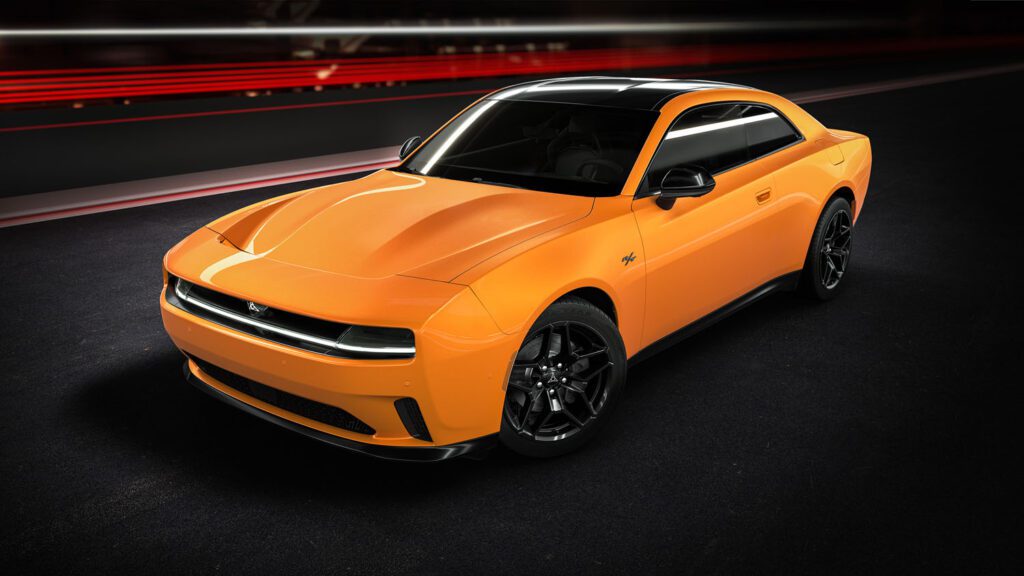
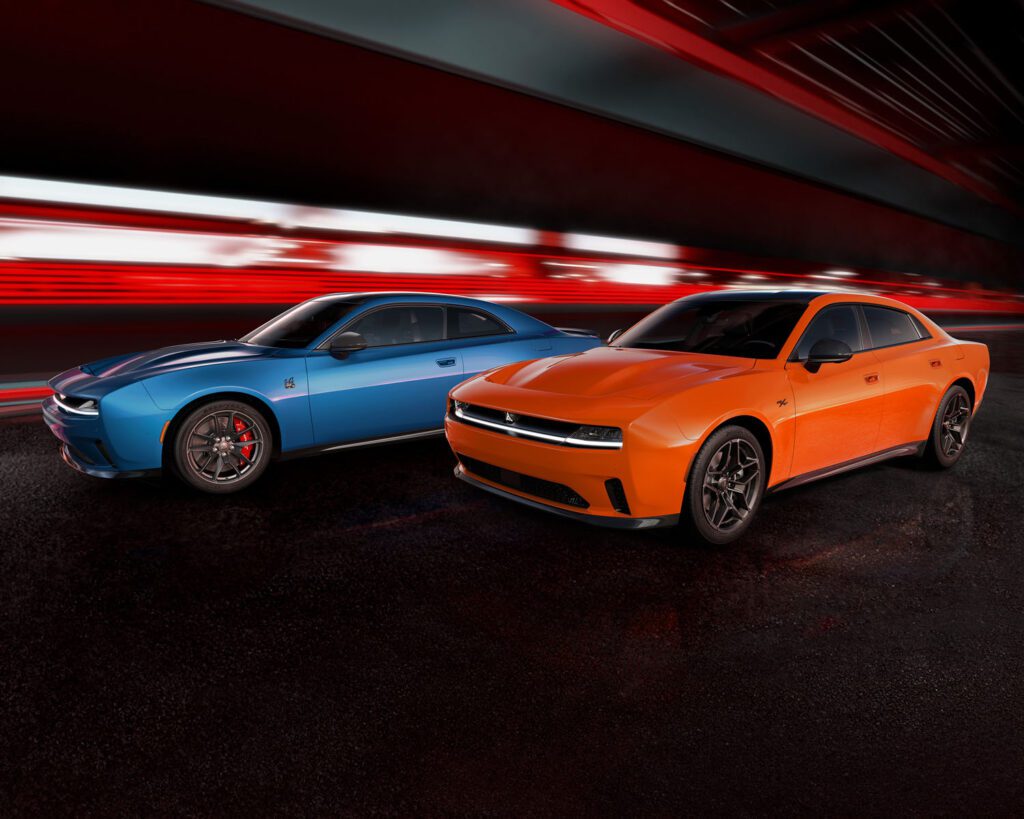
One surprise: the Charger name is now being applied to both the two-door that was shown as a concept and a four-door sedan that directly replaces the outgoing sedan. The two-door supplants the outgoing Challenger coupe. Another surprise: the four-door has a liftgate rather than a trunk, giving it 38.5 cubic feet of cargo space, which Dodge called “utility vehicle” flexibility. That’s enough volume to fit four race tires for track days, Kuniskis suggested. Just don’t call it a “hatchback,” or you’ll scare away the shoppers.
Dodge claims good aerodynamics and low drag for the Charger design, and calls out what it calls its “patent-pending front R-Wing pass-through” on the Daytona models. It’s essentially a duct that admits air from what would be the grille area and releases it from a vent midway through the front hood. If you’ve seen a Jaguar I-Pace, you’ll know exactly how it works. A full-length glass cabin roof is optional.
The Charger Daytona is a big, heavy sedan—curb weight is 5,840 pounds, with a gross vehicle weight rating of 6,950 pounds for the Daytona Scat Pack—so it rides on massive 20-inch wheels. The Goodyear Eagle F1 SuperCar tires are staggered in size: 305 section in the front, 325 in the rear, against a maximum 275 section for the departed Hellcat. Stopping all that mass requires 16-inch Brembo vented rotors with 6-piston front and 4-piston rear calipers (painted red, of course). Dodge says the brake swept area is more than 30 percent higher than its previous SRT model.
Exhaust noise? Huh ?!?!?
As for all that promised noise, it comes from what Dodge calls its “Fratzonic Chambered Exhaust.” Its output is said to “match” today’s “Hellcat levels of sound intensity” in tempo, beat, and cadence, with a maximum volume of 126 decibels. It’s clearly designed to set the Charger Daytona far apart from any other EV on sale today.
Wait, whut? Exhaust? But this is an EV. Yeah, so here’s how it works. Sound waves generated by woofers and midrange speakers is pumped through a series of mixing chambers and out dual “exhaust” pipes. It’s the tuning of the “exhaust assembly” that fine-tunes the sound for “a more authentic sound,” according to a Stellantis patent filing uncovered last September.
Performance bros will be delighted to learn they can “rev” the Daytona at a standstill, mimicking the sound of a V-8 at a stoplight. EV fans will be relieved to learn there’s a Stealth Mode that turns off all the noise.
But there’s more. A set of “force generators” is mounted on the vehicle structure to transmit vibrations into the vehicle, synchronized to its speed, its power delivery, and the exhaust sounds. They generate their own sounds as well. Different vibrations arrive in different parts of the car in different intensities; the driver will feel them through the seat and steering wheel, among other components.
Performance bros will be delighted to learn they can “rev” the Daytona at a standstill, mimicking the sound of a V-8 at a stoplight. EV fans will be relieved to learn there’s a Stealth Mode that turns off all the noise.
Two-door models of the 2024 Dodge Charger Daytona R/T and Scat Pack will start production later this year, all fitted with the Direct Connection Stage kit. Four-door versions of the electric Daytona, along with gasoline-powered Charger models, will arrive early in 2025. All Chargers will be built in the Stellantis assembly plant in Windsor, Ontario.




